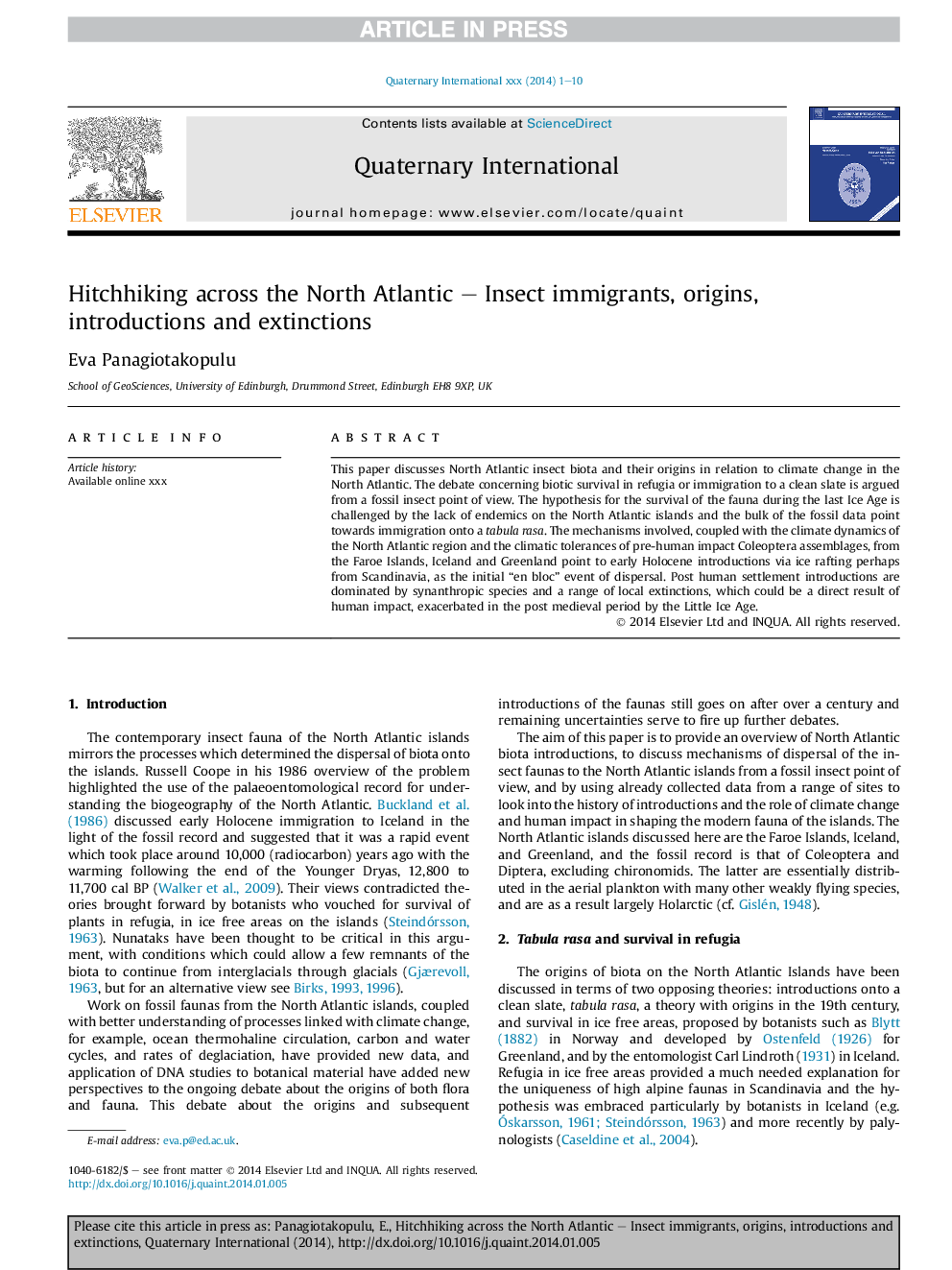| Article ID | Journal | Published Year | Pages | File Type |
|---|---|---|---|---|
| 7452198 | Quaternary International | 2014 | 10 Pages |
Abstract
This paper discusses North Atlantic insect biota and their origins in relation to climate change in the North Atlantic. The debate concerning biotic survival in refugia or immigration to a clean slate is argued from a fossil insect point of view. The hypothesis for the survival of the fauna during the last Ice Age is challenged by the lack of endemics on the North Atlantic islands and the bulk of the fossil data point towards immigration onto a tabula rasa. The mechanisms involved, coupled with the climate dynamics of the North Atlantic region and the climatic tolerances of pre-human impact Coleoptera assemblages, from the Faroe Islands, Iceland and Greenland point to early Holocene introductions via ice rafting perhaps from Scandinavia, as the initial “en bloc” event of dispersal. Post human settlement introductions are dominated by synanthropic species and a range of local extinctions, which could be a direct result of human impact, exacerbated in the post medieval period by the Little Ice Age.
Related Topics
Physical Sciences and Engineering
Earth and Planetary Sciences
Geology
Authors
Eva Panagiotakopulu,
